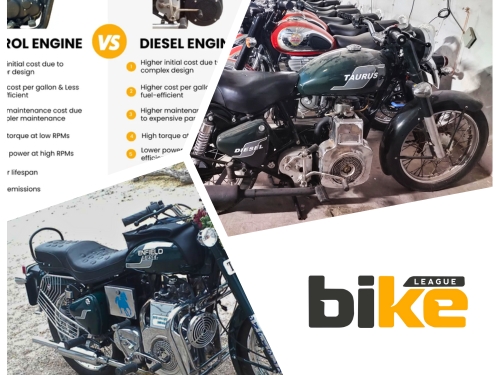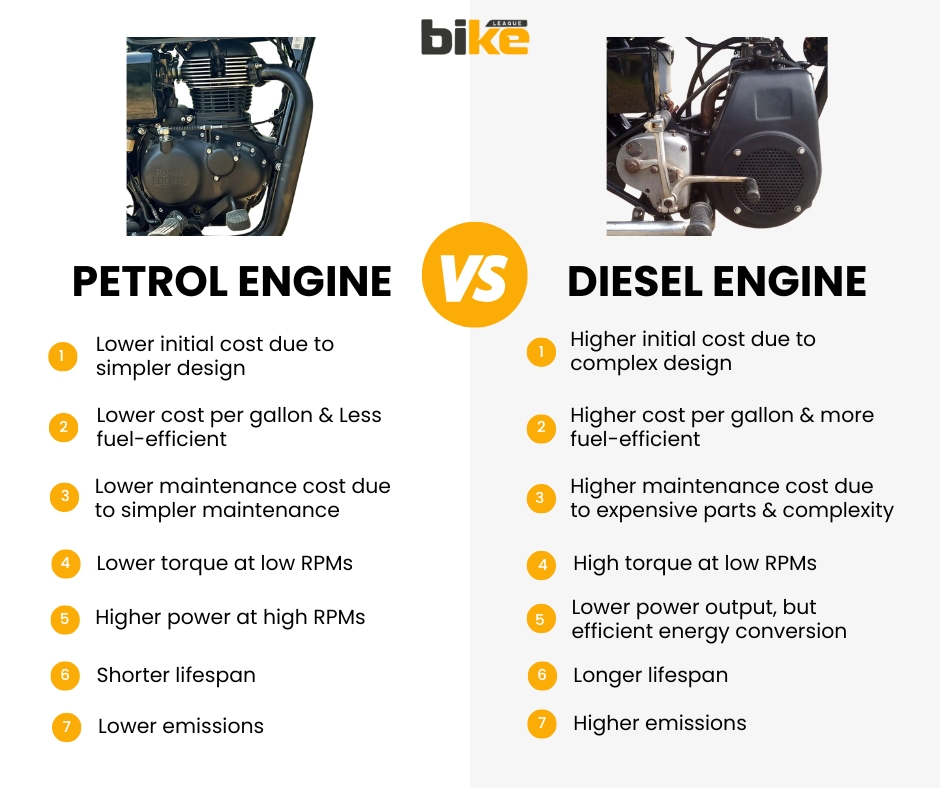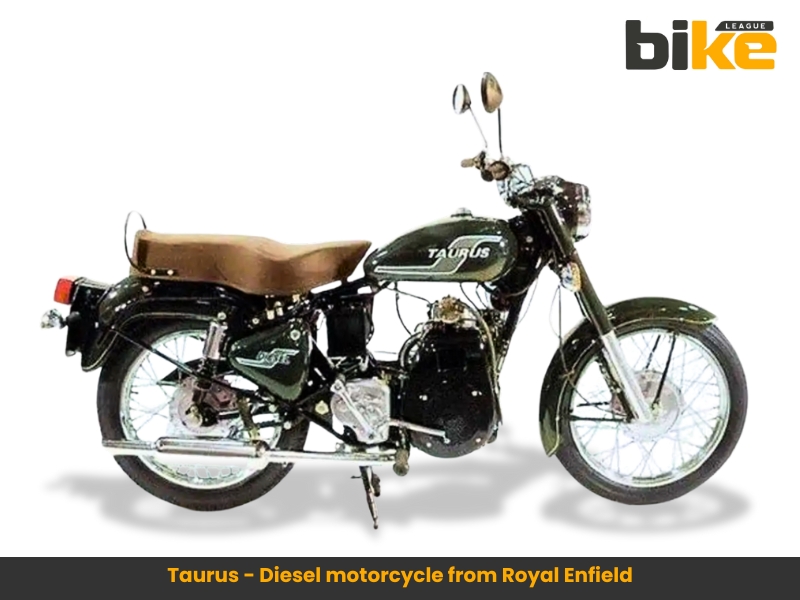
Long story short: To put it simply, diesel fuel is affordable, but diesel bikes are still uncommon in India. Technical challenges, economic reasons, and strict regulations make them less practical, even though they could save fuel. Here’s why these issues keep diesel motorcycles from catching on.
India has a lively transportation scene, and motorcycles are a top choice for many seeking an affordable, efficient way to travel.
Even though diesel fuel is cheaper than petrol, you won’t find diesel engines in the two-wheeler market. Some unique challenges in India prevent their use. It’s an interesting situation!
Key Takeaways
- Diesel motorcycles first appeared in India in the 1980s and gained some popularity in the 1990s. However, they quickly disappeared from the market due to a mix of technical issues, costs, and strict rules.
- Heavier engines, more vibration and noise, and less power compared to petrol motorcycles made dieselmotorcycles less attractive to Indian riders who value agility and comfort.
- Higher upfront prices and maintenance costs reduced the savings diesel bikes could offer—especially since petrol motorcycles have become much more fuel-efficient over the years.
- Strict emission standards like the Bharat Stage norm,) and government efforts to promote greener alternatives, made it even harder for diesel bikes to survive. This led to their production being stopped and discouraged manufacturers from investing in new diesel models.
- While diesel bikes can save some fuel, they also produce more air pollution, especially particulate matter and nitrogen oxides, making them less suitable for India’s crowded cities.
The Rise and Fall of Diesel Bikes in India
Diesel motorcycles first appeared in India in the 1980s, became most popular in the early to mid-1990s, and then faded out by the early 2000s. Stricter emission rules and performance issues were the main reasons for their decline.
Origins and Introduction
- Diesel bikes in India started in the 1980s, when street mechanics began fitting Royal Enfield Bullets with diesel engines. These early changes brought diesel-powered motorcycles to the country for the first time.
- Seeing how popular these conversions were, Royal Enfield released the Taurus in the early 1990s. The Taurus became India’s only mass-produced diesel motorcycle.
- Besides the Taurus, a few other diesel bikes like the Sooraj Diesel Motorcycle were made in small numbers, primarily for rural and utility-focused riders in the 1990s.
Peak Years of Popularity
- The Royal Enfield Taurus came with a 325cc diesel engine, offered excellent fuel efficiency (70-85 kmpl), and had low running costs. These features made it popular among rural riders and fleet operators in the 1990s.
- During that period, diesel bikes were also popular with farmers and the military, who used them for border patrol.
Decline and Disappearance
- By the late 1990s and early 2000s, concerns about pollution, noise, vibrations, and poor performance led to a sharp drop in consumer interest in diesel bikes.
- The introduction of stricter Indian emission standards—especially the Bharat Stage norms in 1999—forced manufacturers to stop producing both the mass-market Royal Enfield Taurus and other small-batch diesel bikes.
- Taurus production ceased in 2001 due to new rules. After that, diesel bikes mostly disappeared from Indian roads, surviving only as collectables or in remote areas.
Even though diesel is affordable, diesel engines are absent from today’s two-wheelers due to technical challenges, economic pressures, and strict regulations. These factors make them impractical for India’s mainstream motorcycle market.
What are the technical challenges, economic pressures, and strict regulations for diesel bikes in India?
1. Technical Challenges
1.1 Engine Weight and Size
Diesel engines are rare in Indian bikes because they are heavier and larger than petrol engines. They need higher compression and stronger parts, which adds to their size and weight.
The extra weight makes designing bikes more difficult, as lighter bikes handle better and are more efficient. Diesel engines also make bikes less agile, which is a downside for riders who want quick handling.
1.2 Vibration and Noise
Diesel engines create more vibration and noise, especially at low speeds. This is a problem for bikes where rider comfort matters.
Extra vibrations can make long rides tiring and cause more wear on the bike. The loud diesel sound isn’t great for people who prefer quieter rides, either.
1.3 Power Delivery and Performance
Diesel engines offer strong torque but usually produce less power than petrol engines of the same size.
This power imbalance affects the riding experience, especially for people who use bikes for commuting or recreational riding.
Petrol engines are popular in India because many riders want quick acceleration and higher top speeds.
2. Economic Factors
2.1 Initial Cost
Diesel bikes cost more upfront than petrol bikes. Their complex engines raise manufacturing costs in a price-sensitive market.
In India, price is a significant factor when buying a motorcycle. The higher upfront cost of diesel bikes can discourage buyers, even if they might save on fuel later.
2.2 Maintenance Costs
Diesel engines usually require more frequent, more expensive maintenance due to their higher compression and greater wear on parts.
For Indian buyers who watch their spending, higher maintenance costs can cancel out any savings from cheaper fuel, especially since many city riders don’t travel long distances each year.
2.3 Fuel Efficiency Gains
Diesel engines are more fuel-efficient in larger vehicles, but the benefit is much smaller in motorcycle-sized engines.
The good news is that modern petrol engines in Indian scooters and motorcycles have improved a lot in fuel economy, coming close to the efficiency of diesel engines.
As petrol engines get better, there are fewer reasons to choose diesel two-wheelers.
3. Regulatory & Environmental Considerations
3.1 Emission Standards
India introduced stricter emission standards, known as Bharat Stage VI, in April 2020. This helps the environment, but it makes it more problematic for diesel engines, especially on small bikes, to meet the rules.
To meet these new standards, manufacturers have to use advanced technologies like diesel particulate filters (DPF) to trap soot and selective catalytic reduction (SCR) systems to reduce harmful nitrogen oxides.
Adding these to small bikes can be expensive. Because of this, it’s hard for companies to make diesel bikes that meet strict emission standards while keeping them affordable for regular riders.
3.2 Government Policies
India encourages cleaner transport, especially electric vehicles and alternative fuels, through policies and incentives. As a result, manufacturers focus less on diesel technology.
These policies discourage manufacturers from investing in diesel two-wheelers.
3.3 Public Perception
Diesel engines are attracting attention due to concerns about air quality in cities. In India’s polluted cities, more people are becoming aware of the health risks posed by diesel.
In short, as India and its riders choose cleaner, more efficient transport, government policies and public preferences make it hard for diesel bikes to succeed today.
List of diesel bikes that were in India
Here’s a list of all diesel motorcycles sold in India, both local and imported models.
1. Royal Enfield Taurus
- Manufacturer: Royal Enfield (India)
- Engine: 325cc diesel engine
- Significance: The world’s first mass-manufactured diesel motorcycle
- Production period: 1980s and 1990s
2. Sooraj Diesel Motorcycle
- Manufacturer: Sooraj Automobiles (India)
- Engine: 325cc Lombardini diesel engine
- Transmission: 4-speed Albion gearbox
3. Sommer Diesel 462 (Imported)
- Manufacturer: Sommer Motorradtechnik (Germany)
- Engine: 462cc diesel engine (Bavarian Hatz Diesel)
4. Track T-800CDI (Imported)
- Manufacturer: EVA Products BV (Netherlands)
- Engine: Diesel engine derived from a Smart car
5. Hayes Diversified Technologies (HDT) Diesel Motorcycles (Imported)
- Initially developed for military use
- Availability: Limited imports by collectors and enthusiasts
- Key features: Durability, ability to run on various types of diesel fuel
How did diesel bikes have trouble with BS norms, and what was their impact on the environment in India?
Diesel bikes in India struggled to meet Bharat Stage (BS) emission norms due to technical issues with their engine designs and increasingly stringent environmental rules that came into effect over time.
Compliance Challenges with BS Norms
- BS norms progressively tightened limits on nitrogen oxides (NOx, gases that contribute to smog), particulate matter (PM, tiny particles that pollute the air), hydrocarbons (HC), and carbon monoxide (CO). Diesel bikes produce higher NOx and particulate emissions, which are harder to control without complex, expensive after-treatment technologies such as Diesel Particulate Filters (DPFs), which trap soot from the exhaust.
- Indian diesel two-wheelers were subject to the same emission standards as diesel three-wheelers, but meeting these standards was challenging due to the two-wheeler’s size and cost constraints on adopting advanced pollution-control technologies.
- The jump from Bharat Stage IV to Bharat Stage VI standards imposed dramatically lower emission limits, especially for NOx (nitrogen oxides) and PM (particulate matter), requiring technology that diesel bike manufacturers found difficult to incorporate economically.
- As a result, the last mass-produced diesel bike, the Royal Enfield Taurus, was discontinued around 2001 because it failed to comply with the new BS standards. No significant new diesel bike models were introduced thereafter.
Environmental Impact of Diesel Bikes in India
- Diesel engines emit significantly higher levels of particulate matter and NOx, which are major contributors to urban air pollution, smog, and respiratory health issues. Older diesel vehicles in India were identified as substantial sources of dangerous airborne pollutants, especially particulate matter (PM2.5) and black carbon.
- Diesel vehicles, compared to petrol ones, emit more PM and NOx, which contribute to smog formation and have severe health impacts; particulate emissions were linked to hundreds of thousands of premature deaths in India.
- Two-wheelers themselves are responsible for a large share of urban pollution, with estimates showing they account for around 32% of air pollution in cities like Delhi. Diesel bikes exacerbate this due to their particulate emissions and noise pollution.
- Due to pollution concerns, regulations increasingly targeted diesel vehicles, leading to bans and phase-outs of older diesel engines in urban areas from 2020 onward, to improve air quality.
FAQ related to diesel bikes/motorcycles in India
1. Why aren’t diesel engines used in bikes in India despite cheaper fuel costs?
Even though diesel prices are lower, the technical challenges, higher upfront costs, and regulatory hurdles make it challenging for bikes in India to truly benefit from the potential fuel savings.
2. What are the main technical challenges of using diesel engines in motorcycles?
A few technical hurdles must be considered when using diesel engines in compact, nimble bikes. These include the engine’s weight and size, increased vibrations and noise, heat generation, and performance at lower RPMs. These challenges highlight the intricate process, making it a fascinating topic to explore!
3. How do emission regulations affect the use of diesel engines in bikes?
Strict emission standards like BS VI can make it quite challenging to fit the necessary emission-control technologies, such as DPF and SCR, into bikes’ limited space. They can also get a bit pricey, but it’s all about keeping our environment cleaner!
4. Are diesel motorcycles more fuel-efficient than petrol ones?
Diesel engines are often praised for their fuel efficiency, but on smaller bikes, the perks aren’t quite as standout. The economic benefits might not feel as compelling for those smaller engines!
5. What are the cost implications of producing diesel bikes?
Making diesel bikes tends to be more expensive because they require sturdier parts, sophisticated fuel injection systems, and technology to control emissions. This can make them a bit pricier in the budget-conscious Indian market.
6. How do diesel engines affect the performance of bikes?
Diesel engines are great for delivering strong torque. Still, they tend to have lower power outputs and may not perform as well at higher speeds as petrol engines. This can make petrol engines a better fit for the exciting riding dynamics many bikers look for!
7. What are the environmental concerns related to diesel bikes?
Diesel engines often release more particulate matter and nitrogen oxides, contributing to air pollution and negatively affecting health. Because of this, they’re generally viewed as less eco-friendly than other options.
8. How do maintenance costs compare between diesel and petrol bikes?
Diesel engines require more regular maintenance and can be pricier. This is because they operate at higher compression ratios and fuel pressures, which can lead to more wear on the parts.
9. Are there any successful examples of diesel motorcycles in India?
Royal Enfield has an exciting history with diesel motorcycles, especially the Bullet, known for its reputation & excellent fuel efficiency. However, these models eventually ended due to technical and regulatory hurdles.
10. Why are manufacturers not investing in diesel technology for bikes in India?
Manufacturers are really embracing cleaner technologies, such as electric vehicles, especially with government incentives. People’s preferences are shifting, and there’s also uncertainty about diesel technology amid changing environmental policies. It’s an exciting time for innovation and sustainability!
Other related articles from Bikeleague India
- Diesel Wash For Bike: Is It Good or Bad
- Bike wash – Different types, procedures, precautions, FAQ
- Different types of motorcycles explained
- Motorcycle engine – Understanding the different types
- Bike Pollution Certificate – Key to Legal & Eco-Friendly Riding
Conclusion
While diesel motorcycles could offer lower fuel costs, they haven’t caught on in India. Technical challenges, higher expenses, and stricter environmental rules have all played a part. With government policies and public interest now focused on cleaner, greener transportation, the future for diesel bikes in India looks increasingly unlikely.
If you have any questions or need more information, email us at bikeleague2017@gmail.com or leave a comment below. We’re always here and happy to help. Also, don’t forget to check out Bikeleague India on our social media platforms to stay connected!




Sir i am a bike lover & one of a reader of your article .How can we get an fully authorized deiseal bullet . an get permission to drive all over the India .
Diesel bullet is a thing of past and as you know there are lot of emission issues related to the same and will be an issue to drive with the same all over India.